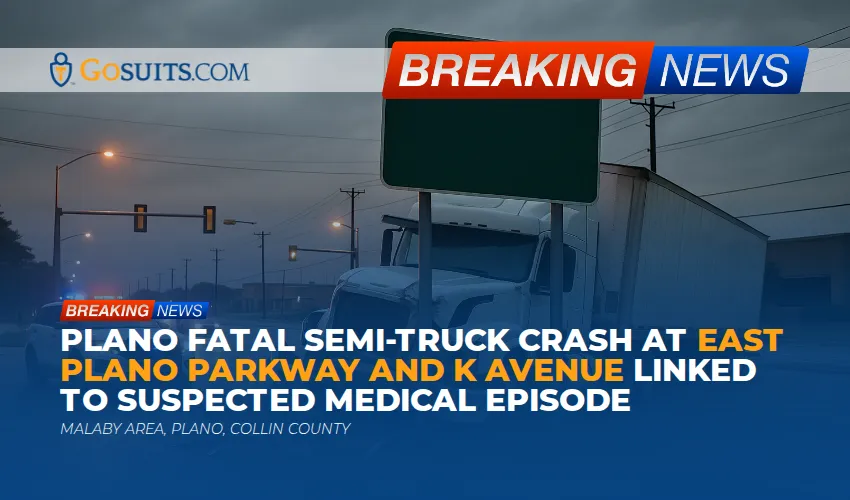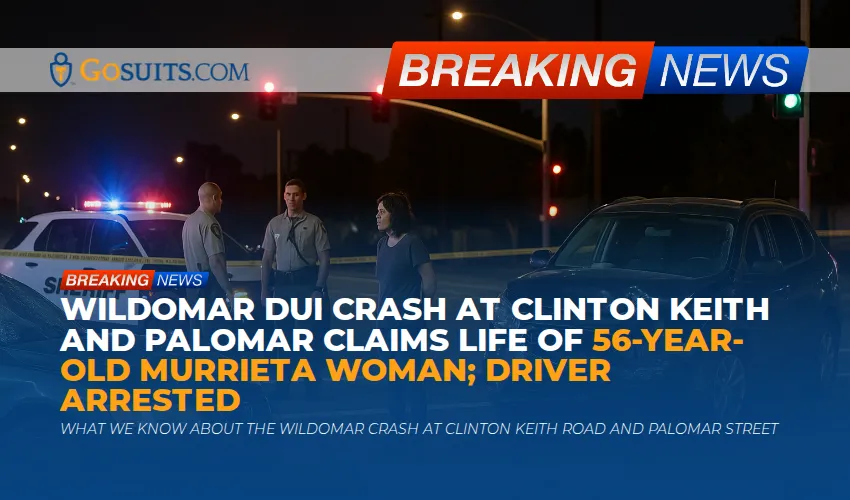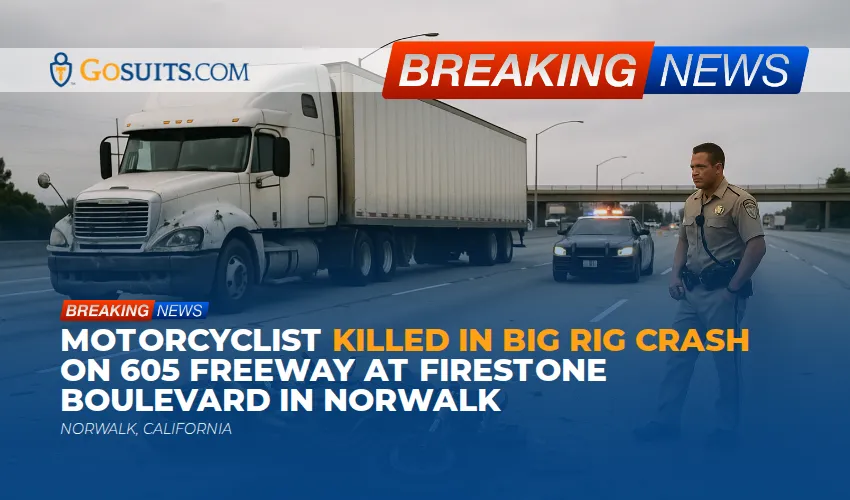- What do proximate cause and cause-in-fact mean in car accident cases?
- How does the but-for test work, and when do courts use the substantial factor test?
- Why does foreseeability limit liability under proximate cause?
- What counts as an intervening or superseding cause in a car crash?
- How do courts handle chain-reaction and multi-vehicle accidents?
- What evidence proves causation in serious injury and wrongful death claims?
- How do Texas, California, and Illinois define causation in negligence?
- How does comparative negligence affect car accident liability in TX, CA, and IL?
- What causation defenses do insurers and defendants commonly raise?
- What do current crash statistics show, and why does causation matter?
- How can GoSuits help you prove causation in complex car crash lawsuits?
- Where can you find reliable legal resources on causation and car accidents?
What do proximate cause and cause-in-fact mean in car accident cases?
You often hear two phrases in car accident liability: cause-in-fact and proximate cause. Both must usually be proven by the injured person to recover in negligence. Courts treat them as two different parts of legal causation.
- Cause-in-fact asks whether the defendant’s conduct actually caused the harm. The classic test is whether the harm would have occurred but for the defendant’s conduct. Legal dictionaries and leading references explain that cause-in-fact is the factual link between conduct and injury, often using the but-for or substantial factor tests. See Cornell Law School’s Wex on cause in fact and dictionary.law.com on proximate cause.
- Proximate cause limits liability to harms that were a reasonably foreseeable result of the conduct. It is a policy boundary that prevents limitless responsibility for every ripple effect of an act. See Cornell Law’s Wex on proximate cause.
In plain terms: cause-in-fact is the real-world chain of events that led to your injuries. Proximate cause asks whether the law considers it fair to hold a person responsible given what risks were reasonably foreseeable.
How does the but-for test work, and when do courts use the substantial factor test?
In a typical two-car crash, the but-for test is straightforward. If the crash would not have happened but for the defendant running a red light, cause-in-fact is satisfied. But in some complex or multi-cause crashes, more than one negligent act could have independently caused the harm. In these situations, courts often use a substantial factor test to avoid unfair results.
- But-for causation: If removing the defendant’s conduct from the scenario means the injury would not occur, cause-in-fact is met. See Wex: Cause in fact.
- Substantial factor: When multiple independent causes contribute to the harm, a defendant’s conduct is a cause-in-fact if it was a substantial factor in producing the harm. California, for example, uses a “substantial factor” approach in negligence. See Mitchell v. Gonzales, 54 Cal. 3d 1041 (Cal. 1991).
When does the substantial factor test apply in car crashes?
Courts may use substantial factor when more than one driver’s negligence combines to cause a pileup, or when separate negligent acts overlap in time. If each act would be sufficient to cause the injury even without the other, a strict but-for test can fail. The substantial factor approach avoids letting all defendants escape responsibility just because another independent cause was also sufficient.
Why does foreseeability limit liability under proximate cause?
Foreseeability asks whether the general type of harm was a reasonably predictable result of the conduct. Proximate cause prevents liability for extreme, unusual consequences far outside what a person could reasonably expect. Cornell’s Wex notes that proximate cause is grounded in foreseeability and fairness limits. See Wex: Proximate cause.
In car accident cases, foreseeability tends to be clearer than in other negligence contexts. If a driver speeds through Houston traffic during a downpour, collision and injury risks are foreseeable. If a driver hits a stopped car on I-35 near Austin, neck and back injuries, lost wages, and property damage are foreseeable results of that impact.
How do courts describe foreseeability in different states?
- Texas: Proximate cause has two parts: cause in fact and foreseeability. Foreseeability means a person of ordinary intelligence should have anticipated the general danger created by the negligent act.
- Illinois: Proximate cause includes cause in fact and legal cause, with legal cause based on foreseeability and remoteness.
- California: While “proximate cause” appears in cases, the operative jury standard asks whether the conduct was a substantial factor in causing harm, which incorporates foreseeability through duty and causation analysis.
What counts as an intervening or superseding cause in a car crash?
An intervening cause is a later event that occurs after the defendant’s negligence and contributes to the harm. A superseding cause is a special kind of intervening cause that is so unexpected and independent that it breaks the chain of legal causation, relieving the original defendant of liability. See Wex: Intervening cause and Wex: Superseding cause.
- Common intervening events include a second driver rear-ending the first collision scene in Los Angeles, or an ambulance crash en route from a San Antonio wreck. Whether these are superseding depends on foreseeability and the nature of the event.
- Criminal acts can be superseding if not reasonably foreseeable. Illinois decisions explain that an intervening act becomes superseding when it is not reasonably foreseeable and breaks the causal chain. See Abrams v. City of Chicago, 211 Ill. 2d 251, 258–60 (2004).
In practice, many after-occurring events in roadway settings are foreseeable. Secondary collisions at crash scenes in Orange County or Chicago are common, especially when lanes are partially blocked. Whether an intervening act supersedes is often decided by a jury after hearing evidence about timing, location, and predictability.
How do courts handle chain-reaction and multi-vehicle accidents?
Chain-reaction crashes happen quickly and involve multiple drivers, vehicles, and insurers. Cause-in-fact can be established against several drivers if each was a substantial factor. Proximate cause can limit liability for harms too remote from a driver’s negligence. Responsibility is then allocated among drivers using each state’s comparative fault rules.
- Shared responsibility: Multiple negligent drivers can each be a legal cause. California uses substantial factor. Texas and Illinois use but-for with foreseeability, but both recognize liability for concurrent causes if each was a substantial factor in producing the harm. See Wex and state cases cited below.
- Allocation of fault: Each state has statutes apportioning fault among drivers, sometimes affecting joint liability. Texas proportionate responsibility is codified at Tex. Civ. Prac. & Rem. Code ch. 33. California limits joint liability for non-economic damages under Proposition 51, Cal. Civ. Code § 1431.2. Illinois addresses joint and several liability at 735 ILCS 5/2-1117.
In a Dallas multi-car pileup on I-635, for example, a jury may find several drivers negligent for following too closely in heavy rain. Each driver’s share of fault will be assigned, and damages are adjusted accordingly under Texas law.
What evidence proves causation in serious injury and wrongful death claims?
Proving causation requires a careful factual record. Insurers scrutinize every link in the chain, especially in serious injury and wrongful death cases. Both plaintiffs and defendants rely on documentation, witness testimony, and qualified professional analyses to explain how the crash caused specific injuries.
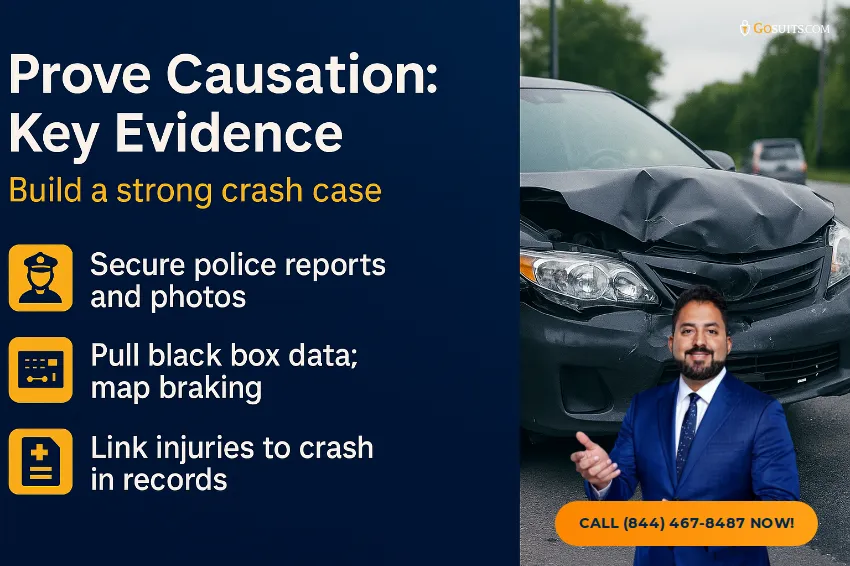
Which records and data help build the chain of causation?
- Police crash reports: Foundation for timelines, locations, and initial fault assessment. These reports often include diagrams, statements, and citations. Many agencies in TX, CA, and IL use standard forms compatible with federal data collection. See general federal overview at NHTSA FARS.
- Scene photographs and video: Intersection cams in Los Angeles, dash cams in San Diego, or bystander videos in Houston can show signals, weather, and spacing that speak directly to cause-in-fact.
- Event Data Recorder (EDR) downloads: Speed, brake, and throttle inputs help model pre-impact behavior.
- Vehicle damage and crush profiles: Physical damage patterns help reconstruct impact angles and sequence in multi-vehicle collisions.
- Medical records and causation notes: Emergency room records, imaging, and treating provider notes connect mechanism of injury to diagnosed trauma. This linkage is essential to show that the crash, not a later event, caused the harm.
- Cell phone records: Used to confirm or refute distracted driving near the time of impact.
- Traffic signal data and maintenance logs: In San Francisco or Chicago municipal cases, these can matter for signal timing or road design defenses.
How do courts assess scientific and technical testimony on causation?
Courts rely on qualified testimony when specialized topics like crash reconstruction or biomechanics are central to causation. Federal Rule of Evidence 702 outlines the standards for admitting such testimony, focusing on qualification and reliability. See Federal Rules of Evidence 702. State courts in TX, CA, and IL apply similar reliability principles under their own evidence rules and case law. The goal is to help the factfinder understand whether the crash forces could cause the injuries claimed and whether alternative explanations are credible.
What is proximate cause under Texas law?
Texas defines proximate cause as consisting of cause in fact and foreseeability. Cause in fact means the act was a substantial factor in bringing about the injury and without it the harm would not have occurred. Foreseeability requires that a person of ordinary intelligence would have anticipated the danger created by the negligent act. See Doe v. Boys Clubs of Greater Dallas, 907 S.W.2d 472, 477 (Tex. 1995). Texas courts frequently reaffirm this two-part definition in personal injury cases across Houston, Dallas, Austin, and San Antonio.
Texas has also discussed producing cause in certain statutory contexts, but in ordinary negligence actions arising from car crashes, proximate cause is the standard for liability and damages.
How does California’s substantial factor test work for car accidents?
California uses a substantial factor test to define causation in negligence. The California Supreme Court adopted substantial factor to avoid confusing juries with “proximate cause” language and to better handle multiple causes. See Mitchell v. Gonzales, 54 Cal. 3d 1041 (Cal. 1991). Subsequent cases explain that a substantial factor is more than a remote or trivial factor, but it need not be the only cause. See Rutherford v. Owens-Illinois, Inc., 16 Cal. 4th 953, 969–70 (1997). This standard applies in car accident trials in Los Angeles, San Diego, San Francisco, Sacramento, and Orange County courts.

What is legal cause versus cause in fact under Illinois law?
Illinois breaks proximate cause into cause in fact and legal cause. Cause in fact examines whether the injury would have occurred absent the defendant’s conduct, while legal cause considers foreseeability and whether the injury is not so unlikely as to be highly extraordinary. See Lee v. Chicago Transit Authority, 152 Ill. 2d 432, 455–56 (1992). Illinois courts also address superseding cause when an intervening event breaks the causal chain. See Abrams v. City of Chicago, 211 Ill. 2d 251 (2004).
How does comparative negligence affect car accident liability in TX, CA, and IL?
Comparative negligence allocates fault among all responsible parties and affects damages recovery. Causation and fault are often intertwined in complex car crash lawsuits.
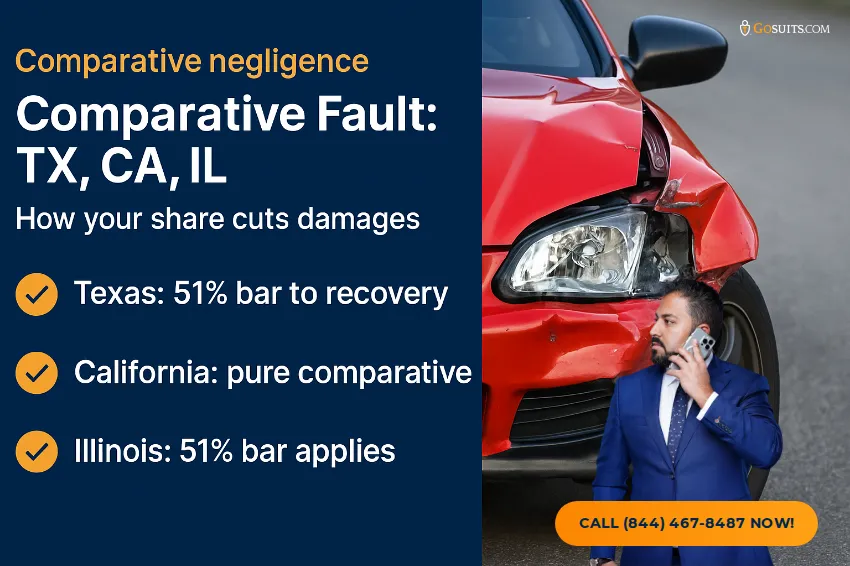
- Texas: Texas uses modified comparative negligence with a 51 percent bar. If you are more than 50 percent responsible, you cannot recover. See Tex. Civ. Prac. & Rem. Code § 33.001. Fault is apportioned among all involved under § 33.003.
- California: California applies pure comparative negligence, reducing damages in proportion to the plaintiff’s fault no matter the percentage. This was established in Li v. Yellow Cab Co., 13 Cal. 3d 804 (1975), with non-economic damages allocation limited by Cal. Civ. Code § 1431.2.
- Illinois: Illinois uses modified comparative negligence with a 51 percent bar. If a plaintiff’s fault is more than 50 percent, recovery is barred. See 735 ILCS 5/2-1116.
In practice, comparative negligence arguments often hinge on causation: Was speeding in Chicago a substantial factor in the rear-end collision, or was the sudden, unpredictable stop the true cause? Did following too closely on the 405 in Los Angeles materially contribute to a multi-car pileup, even if a phantom vehicle cut in?
What causation defenses do insurers and defendants commonly raise?
- Preexisting condition or alternative cause: Arguing the injuries stem from an earlier incident rather than the crash. Plaintiffs respond with medical records and treating provider testimony linking trauma to the collision.
- Superseding cause: Claiming a later, unforeseeable event broke the chain. For example, an unrelated criminal act at the scene in Sacramento. Courts analyze foreseeability and independence. See Wex: Superseding cause.
- No cause-in-fact: Insisting the crash would have happened even without the defendant’s conduct, or that their conduct was too minor to matter. Plaintiffs counter with reconstruction, EDR data, and witness accounts.
- Comparative negligence: Alleging the plaintiff’s own speed, distraction, or unsafe lane change in Austin or San Diego was a substantial factor, reducing damages under state law.
- Minor impact defense: Asserting the forces were too small to cause claimed injuries. Plaintiffs often use photographs, repair estimates, and medical testimony to connect mechanism to injury.
What do current crash statistics show, and why does causation matter?
Understanding causation is not just technical. It is essential because serious crashes remain common and devastating in TX, CA, and IL.
- National fatalities: NHTSA estimates 40,990 people died in traffic crashes in 2023, a 3.6 percent decrease from 2022, but still far above pre-2020 levels. See NHTSA 2023 estimate.
- Injury burden: The CDC reports that motor vehicle crashes are a leading cause of injury in the United States and generate billions in medical and work loss costs annually. See CDC Transportation Safety Fast Facts.
- Risk factors: Speeding, impairment, and distraction remain leading contributing factors nationwide. NHTSA’s Traffic Safety Facts provide detailed breakdowns used in litigation and policy. See NHTSA Research and Data.
Because collisions are frequent on busy corridors like I-10 in Houston, I-5 through Los Angeles and San Diego, the 101 in San Francisco, and the Kennedy and Eisenhower in Chicago, identifying proximate cause and cause-in-fact is central to establishing fault and obtaining fair compensation in serious injury cases and wrongful death claims.
How can GoSuits help you prove causation in complex car crash lawsuits?
If you or a loved one suffered harm in a car crash in Texas, California, or Illinois, questions about cause-in-fact and proximate cause will shape the outcome. Insurance companies often dispute causation early, and evidence can be lost quickly. Speaking with a car accident lawyer early can help protect your rights, keep crucial evidence, and develop a clear chain of causation.
What availability and communication do we offer?
- Available 24/7: You can reach us day or night for an immediate free consultation. A licensed attorney and support staff are on standby at all locations, ready to help when you call.
- Multilingual support: We offer multilingual client service, with 24/7 Spanish and Farsi speakers available. Clear communication is essential for collecting accurate facts, witness information, and medical documentation tied to causation.
What are our fee policies and cost transparency?
- No win, No Attorney Fees: You pay no attorney fees unless we obtain a recovery.
- No hidden administrative fees: We explain costs up front and keep you informed at each stage. Transparency helps you focus on healing while we focus on building a strong causation record.
How do our tools and case workflow help your claim?
- Proprietary case software: GoSuits developed an internal Personal Injury case system that accelerates investigation, document collection, and analysis. It helps us track cause-in-fact evidence like EDR downloads, scene measurements, and medical links, and it organizes the timeline for demand packages, negotiations, filing, and discovery.
- Efficient investigation: We move quickly to secure camera footage in places like downtown Dallas or the Miracle Mile in Los Angeles, preserve vehicle data, and contact witnesses before memories fade. Our workflows are built to anticipate how insurers challenge causation.
What is our experience and track record?
- 30 years of combined experience: Our team has handled a wide range of serious injury cases in TX, CA, and IL, including complex multi-vehicle crashes where causation is contested from day one.
- 1,000+ litigated cases: We have litigated more than a thousand cases, with settlement and verdict results published here: GoSuits prior cases.
- Qualified professional witnesses: In product defect, 18-wheeler, brain and spinal injury, and other complex matters, we retain qualified professional witnesses within the state to explain collision dynamics, human factors, and injury causation where appropriate.
- Multi-state litigation: We litigate severe injury and complex cases in Texas, California, and Illinois.
- Awards:
- #1 Settlements and verdicts across multiple U.S. Counties according to TopVerdict.
- Top 100 Settlement in Texas.
- Sean Chalaki recognized Top 40 under 40 by National Trial Lawyers.
- Recognized by Best Lawyers in 2023, 2024, 2025.
- Selected to Super Lawyers since 2021.
How do we add value specifically on causation disputes?
- Early causation strategy: We map the causation chain immediately, identifying potential intervening events and addressing foreseeability so that insurers have less room to argue superseding causes.
- Evidence preservation: We send preservation notices for surveillance footage in places like Houston’s Galleria area, LA’s Westside intersections, or Chicago’s Loop, and we coordinate EDR pulls and scene inspections quickly.
- Medical linkage: We coordinate with treating providers to document mechanism of injury, acute findings, and consistent symptom progression that align with crash forces.
- Comparative fault analysis: We analyze scene data for lane position, sightlines, and reaction times to address arguments about shared responsibility under Texas, California, or Illinois comparative negligence laws.

Where are our nearest office locations, and how can we help immediately?
- Texas: Serving clients across Houston, Dallas, Austin, and San Antonio, we can initiate same-day investigations, including requesting traffic cam footage and sending letters to preserve evidence.
- California: In Los Angeles, San Diego, San Francisco, Sacramento, and Orange County, we coordinate local scene inspections and obtain intersection data where available.
- Illinois: In Chicago, Naperville, and Springfield, we gather police reports, request 911 audio, and initiate municipal records requests relevant to traffic control and road conditions.
We are not a volume firm. We focus on quality legal services and careful attention to detail. That includes listening to your story, documenting how the crash changed your life, and building a clear, evidence-based causation narrative tailored to Texas, California, or Illinois law. You can contact us anytime. A team member is ready 24/7 to start protecting time-sensitive evidence and to offer a free consultation.
How is GoSuits involved in the community?
- Community engagement: We participate in local schools, chambers of commerce, and nonprofit foundations.
- Trial lawyer leadership: Our attorneys serve on boards and are active members of organizations such as the Texas Trial Lawyers Association and consumer protection groups.
Reliable legal resources on causation and car accidents
- Cornell Law Wex: Cause in fact
- Cornell Law Wex: Proximate cause
- Cornell Law Wex: Intervening cause
- Cornell Law Wex: Superseding cause
- Texas Proportionate Responsibility Statute, Ch. 33
- Illinois Comparative Negligence, 735 ILCS 5/2-1116
- California Civil Code § 1431.2
- Doe v. Boys Clubs of Greater Dallas, 907 S.W.2d 472 (Tex. 1995)
- Mitchell v. Gonzales, 54 Cal. 3d 1041 (Cal. 1991)
- Rutherford v. Owens-Illinois, Inc., 16 Cal. 4th 953 (1997)
- Lee v. Chicago Transit Authority, 152 Ill. 2d 432 (1992)
- Abrams v. City of Chicago, 211 Ill. 2d 251 (2004)
- NHTSA 2023 Traffic Fatalities Estimate
- CDC Transportation Safety Fast Facts
- Texas State Law Library Guides: Court Rules
- Federal Rules of Evidence 702



